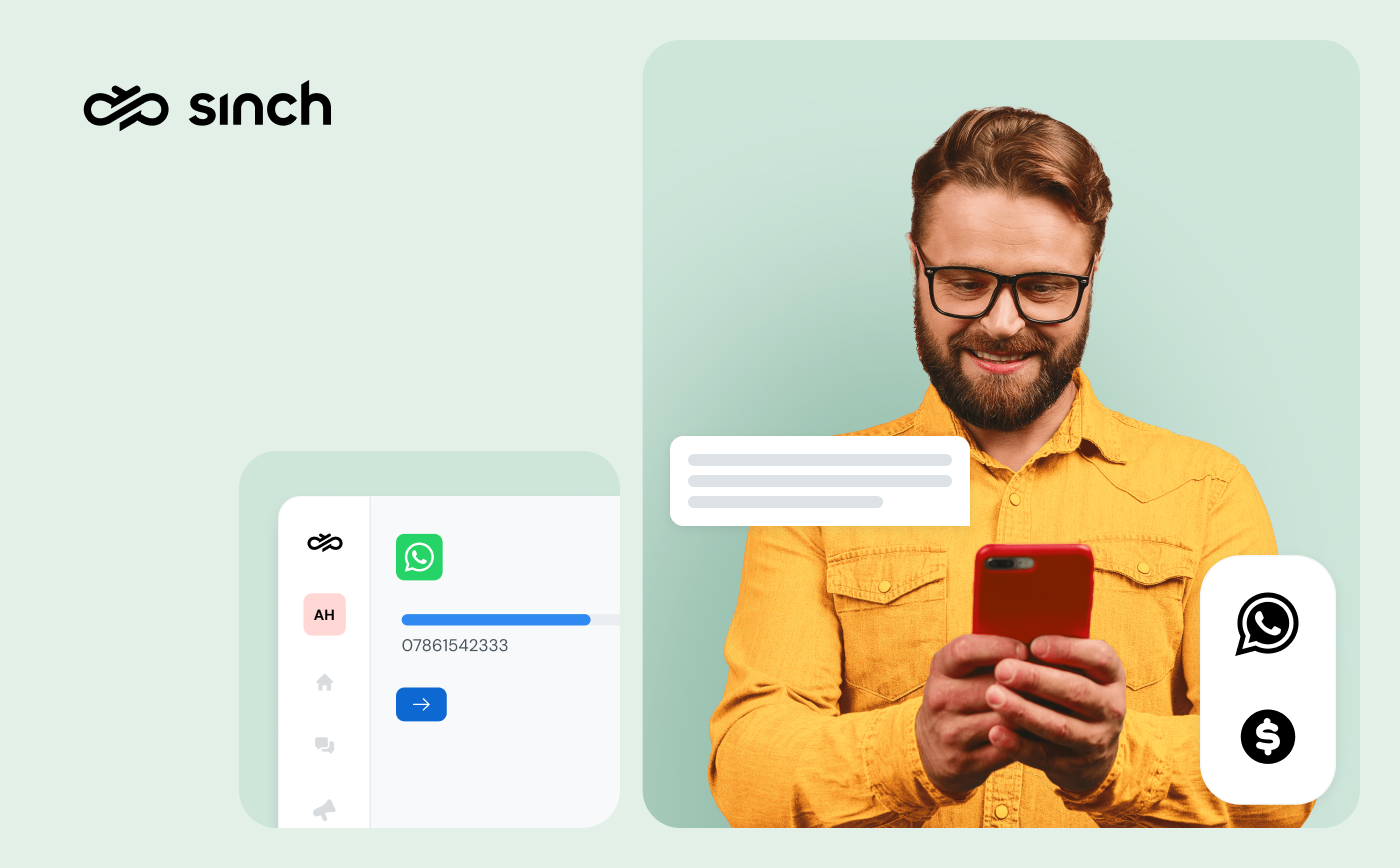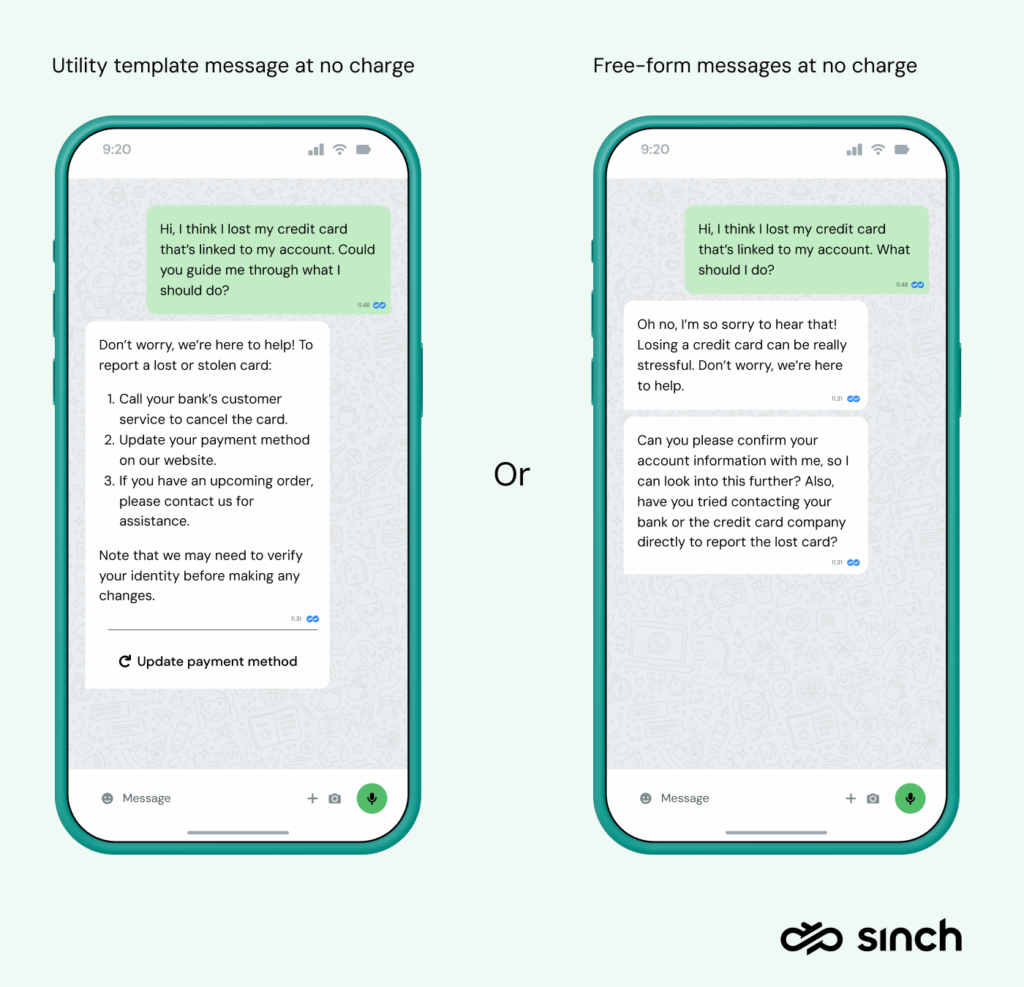Insights
How much does WhatsApp cost for businesses? The pricing model explained

Insights

If you’re trying to untangle WhatsApp’s complex business pricing, you’ve come to the right place. We’ll explain how WhatsApp calculates its messaging prices and what’s changed in 2025.
Fact: With its engaging and easy-to-use chat features, WhatsApp is one of the most popular messaging apps in the world.
Also fact: If you’re a business and want to use WhatsApp at scale for your customer communication, you’ve probably found the platform not quite as intuitive when it comes to pricing structure. There are different message categories, regional pricing, and costs vary by tiers – plus, WhatsApp introduced a completely new pricing model on July 1, 2025.
All of this makes it quite tricky to understand how WhatsApp calculates messaging costs and what that might mean for your budget. So, let’s unpack WhatsApp’s business pricing.
In the following, we’ll focus on the WhatsApp Business API pricing. Read our introductory guide to learn more about the WhatsApp Business app or our article about Meta Verified (formerly WhatsApp Business Premium) if you’re interested in the WhatsApp Business app subscription.
On July 1, 2025, WhatsApp officially retired its conversation-based pricing and now only charges businesses by delivered message template. This per-message pricing is therefore de facto replacing the WhatsApp Business API model (WhatsApp Business Platform) where companies could send multiple messages within a certain time frame and only pay for one message.
With the new model, WhatsApp wants to make the pricing simpler and more consistent with industry practices. As other mobile messaging services like SMS or RCS can also charge per message, it’ll be easier for businesses to compare costs.
The exact cost a business pays for a WhatsApp message depends on two factors: the message category and the market. Let’s break down what this means exactly.
WhatsApp defines three types of message template categories: marketing, utility, and authentication.
Each category comes with its own price tag, with marketing being the most expensive template category.
Here’s an overview of what the different categories mean.
Marketing: Marketing templates encompass any type of content with a promotional goal like driving sales or boosting awareness. Anything from product launches to targeted offers to abandoned cart reminders can fall into that category.
Utility: With utility templates businesses can send non-promotional messages like order-related updates, payment reminders, or fraud alerts.
Authentication: These message templates enable businesses to verify a user’s identity, like sending one-time passwords, passcodes, or two-factor authentications.
For more information, read WhatsApp’s detailed category guidelines.
Note that with the WhatsApp Business API, businesses have to use a template to initiate marketing, utility, and authentication messages to users. Check out our guide on WhatsApp Business templates to learn more about how they work.
WhatsApp also has a “service” category. Service messages are user-initiated conversations and typically fall into a customer support use case. Businesses can respond to them free of charge within 24 hours with free-form (not templated) messages or utility template messages, including quick replies.

Responding with a marketing or authentication template message is also possible, but will incur charges.
Summing up, your WhatsApp message price will depend on the template category. The other factor that determines the cost is the market.
Sending a WhatsApp message to a customer in Brazil doesn’t cost the same as contacting a customer in India: WhatsApp charges different rates depending on the market.
The market is defined by the country code of the recipient’s phone number. WhatsApp constantly updates these rates. You can find the current rate cards here.
WhatsApp has temporarily paused marketing message templates to users with a U.S. phone number.
Basically, the WhatsApp Business pricing formula per delivered message is: category + market = price. You can also use WhatsApp’s interactive tool to calculate the exact rates for your market. Aside from this general formula, WhatsApp also offers incentives to make messaging more attractive and cheaper for businesses: free entry points and volume tiers.
Keep in mind that if you’re working with a tool from a Business Solution Provider, the final cost might vary and also depend on additional functionalities like automations, chatbots, CRM integrations, access to other messaging tools, and more.
When a user messages your business through a click-to-WhatsApp ad or a Facebook Page action button, and you answer within 24 hours, your response opens up a three-day (72-hour) “free entry point” window. In this time frame, you won’t be charged for template messages.
These free entry points are very attractive when you run targeted marketing campaigns, for example around Black Friday and Cyber Monday.
Volume tiers basically mean: Sending more WhatsApp messages (and reaching a higher tier in a market category) unlocks more attractive pricing and reduced rates of up to 20%. In the most basic terms, the message volume is determined by the number of messages your WhatsApp Business account sends per month in each category-market pairing. Here’s how WhatsApp looks at volume tiers:
Here’s an example calculation of what this could look like for authentication and utility messages.
| Tier 1 | Tier 2 | Tier 3 | Tier 4 | Tier 5 | |
|---|---|---|---|---|---|
| Utility messages | Market rate | -5% | -10% | -15% | -20% |
| Authentication messages | Market rate | -5% | -10% | -15% | -20% |
While WhatsApp constantly adjusts the message pricing for businesses, 2025 has seen some major changes to the overall pricing model. Here are the main updates summed up:
These changes are meant to encourage more meaningful conversations, create a better customer experience, make WhatsApp business messaging more scalable and more efficient, and ultimately result in a better return on investment.
Admittedly, WhatsApp Business pricing can be a bit intimidating at first, but with the right solution and an experienced and trusted Business Solution Provider like Sinch, you’ll get access to an intuitive WhatsApp platform and support from our experienced team. So, you can focus on creating exciting customer experiences on WhatsApp, while we take care of the technical details.
For any questions about WhatsApp Business costs or if you want to know more about how to get started with a WhatsApp Business account, get in touch with our experts.